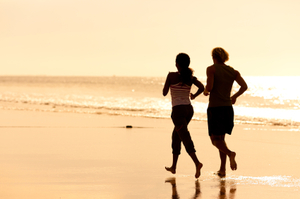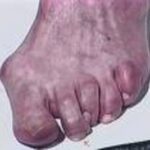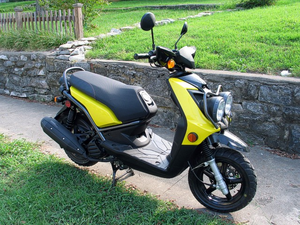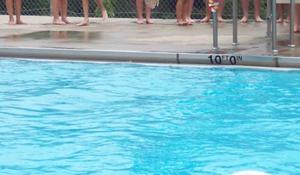Barefoot-style running and barefoot running shoes have become the latest craze among athletes and fitness enthusiasts. Barefoot running sounds simple enough, but there are important things you must know before you try it. If you try to jump right into barefoot-style running without knowing what to expect, you might be immediately turned off by it, or even worse, injure yourself.
Changing Your Stride
The most important thing you must know about barefoot running is that you need to change your stride. You’re probably used to a traditional heel-toe strike — landing on the back of your heel and then rolling your foot forward on to your toes. A heel-toe stride generates a much greater impact when your foot hits the ground.
When you’re running barefoot, you need to land on the balls of your feet — a forefoot strike. If you land on your heels, the shockwave upon impact will travel through your skeleton — it will hurt — and you could easily injure yourself. Running on the balls of your feet takes some getting used to. I suggest walking on the balls of your feet for a while to help you get used to it. Then, gradually start transitioning to running on the balls of your feet. After some time, running like this will start to feel natural, and you won’t even have to think about it.
Calves and Ankles
The very first thing I noticed when I first started barefoot-style running is that your calves and ankles need to be much stronger to run on the balls of your feet than to run with a heel-toe stride. Don’t be surprised if your calves are painfully sore after your first barefoot run. If this is the case, you must let your muscles heal before you go running again, or else they won’t get stronger. You might also feel soreness in your ankles. This is because your tendons are weak and need to get stronger. Again, just wait for the soreness to go away completely before you run again. Gradually, your calves and ankles will adapt, and you will no longer have any trouble running on the balls of your feet.
Barefoot Running Shoes
Barefoot running shoes” sounds like an oxymoron, but they do exist and they are quite popular. You’ve probably already seen someone wearing a pair of Vibram Five-Fingers — the unusual-looking shoes with toes that look like foot gloves. Vibram Five-Fingers are just one of many types of different barefoot running shoes. Vivobarefoot is another popular brand of barefoot running shoes you might have seen, but they don’t have toes and they look a bit more like normal sneakers. Even well-known brands like Nike and Reebok have their own versions of barefoot shoes.
It seems contradictory to wear a shoe to run barefoot, but I suggest you invest in a pair. Think of a barefoot running shoe not as a sneaker, but as a protective sock. A good pair of barefoot running shoes will protect your feet from getting scraped, cut, and stabbed as you run across rough surfaces, such as pavement and gravel. If you attempted to run down the street without any shoes on after wearing sneakers for most of your life, you would be in for a lot of pain. If running totally barefoot is something you want to work towards, you are going to have to spend a long time building up calluses that can withstand that kind of abuse.




